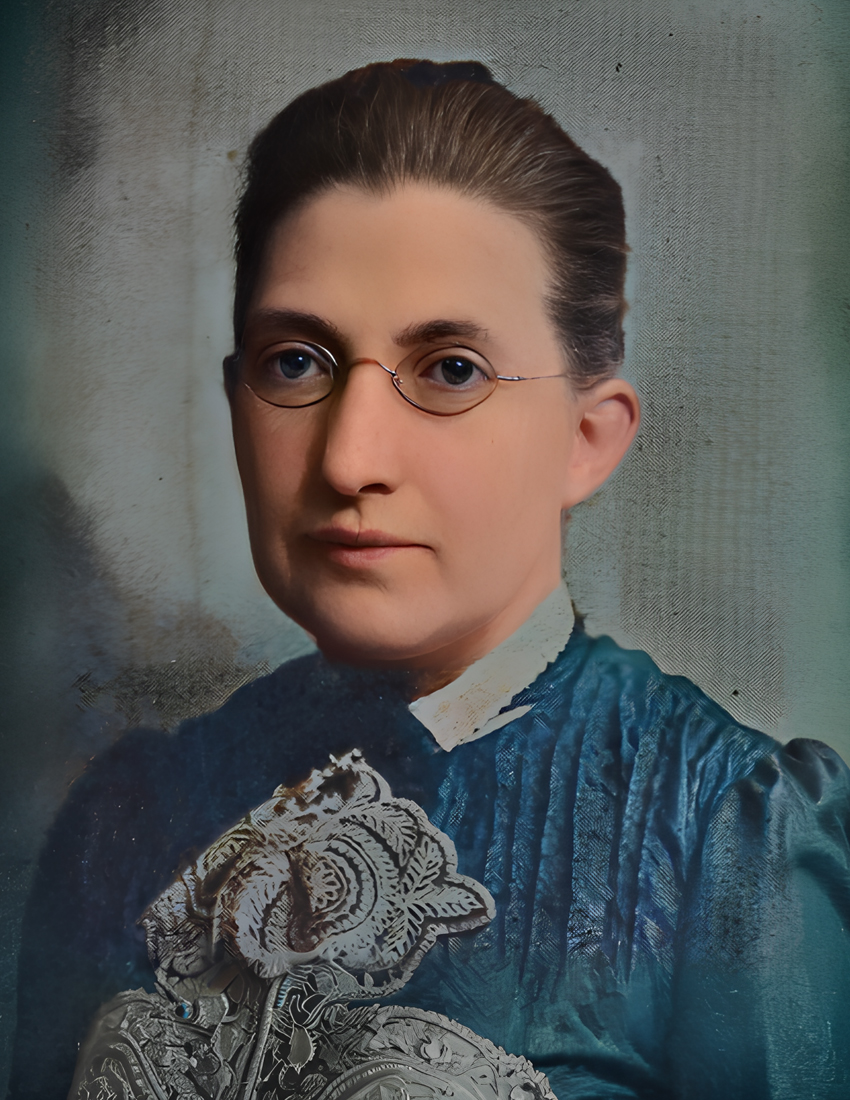Born: June 28, 1851, Philadelphia, PA.
Died: April 24, 1920, Philadelphia, PA.
Buried: Woodlands Cemetery, Philadelphia, PA.
Eliza Hewitt

Hymns by Eliza Hewitt
From Slate to Sunshine: The Inspiring Story of Eliza Hewitt
In the pages of our hymnals, you’ll find the name Eliza Hewitt attached to beloved classics like “There is Sunshine in My Soul Today,” “When We All Get to Heaven,” and “More About Jesus.” Her lyrics have uplifted countless believers for over a century. But behind the poetry was a woman who overcame pain and infirmity to become one of the most prolific hymn writers of her day.
A Promising Beginning
Born in Philadelphia in 1851, Eliza Edmunds Hewitt seemed destined for greatness from a young age. A star student, she graduated as valedictorian from the Philadelphia Girls’ Normal School and embarked on a career as an educator. Her future looked bright as she took a teaching position, ready to shape young minds and make her mark on the world.
But life took an unexpected turn. The details of what exactly happened remain shrouded in mystery, one of those stories that grows richer with each telling, yet becomes hazier with each passing year. Family tradition speaks of a dramatic incident: an unruly student striking her across the back with a heavy slate, fracturing her spine and leaving her encased in a body cast for months. It’s the kind of vivid detail that captures the imagination and fits perfectly with the sudden, jarring nature of life’s unexpected trials.
Yet when we dig into the historical record, we find something far more common but no less profound: silence. The early biographers who knew Eliza personally, men like Jacob Henry Hall and Charles Gabriel, speak only of “serious spinal trouble” that ended her teaching career and left her a “shut-in sufferer for a number of years.” No dramatic slate. No specific incident. Just the quiet, persistent reality of illness that so many face.
Perhaps the slate story is true. Family memories often preserve what formal records lose. Or perhaps it’s simply how we prefer our trials to come: sudden, dramatic, with a clear cause we can point to and say, “There. That’s when everything changed.” But God rarely needs our stories to be dramatic to use them powerfully. Whether Eliza’s suffering came from a student’s blow or simply from the mysterious workings of a fallen body, the result was the same: a season of pain that could have led to bitterness, but instead became the very foundation of a ministry that would touch countless lives.
It would have been easy to give into despair, but not Eliza. She transformed her season of suffering, however it came, into a catalyst for ministry.
Songs from the Sickbed
During her long convalescence, Eliza began reading extensively and pouring out her soul in poetry. Those verses became her first hymns, often focused on themes of Jesus’ love and heaven’s joys that were her hope beyond her pain. One day, venturing outdoors for a short walk after months in bed, Eliza felt so buoyed by the sunshine and birdsong that she returned home and penned one of her most famous hymns:
There is sunshine in my soul today,
More glorious and bright
Than glows in any earthly sky,
For Jesus is my light.
Eliza’s injury left her unable to resume teaching, but opened the door to a prolific writing career. Her poems for children came to the attention of composer John Sweney, sparking a collaborative partnership that would produce over 50 hymns, like “Will There Be Any Stars In My Crown?” and “More About Jesus Would I Know.” Eliza also worked with other leading gospel composers of the day like B.D. Ackley, Charles Gabriel, and William Kirkpatrick to set her lyrics to music.
Ministry in Verse
As Eliza’s health improved, so did her involvement in ministry. For many years, she taught the primary Sunday school class at her church and served as superintendent for the Northern Home for Friendless Children. She volunteered with evangelistic campaigns, contributed to Christian periodicals, and even became close friends with the famous hymn writer Fanny Crosby.
Through it all, Eliza kept writing, often drawing inspiration directly from her Scripture meditation and prayer time. She was known to say, “I wrote only what God told me to write,” and described her creative process as “letting Christ have his way.” Eliza saw hymn writing not primarily as art or self-expression, but as service to her Savior.
In total, she penned the words to over 500 hymns in her lifetime, cementing her legacy as one of the most beloved Christian lyricists of the 19th century. Many are still sung today, continuing to point hearts heavenward just as they did when Eliza first wrote them on the pages of her journal.
A Life Lived for Jesus
Eliza Hewitt’s story reminds us that some of life’s greatest trials can become the soil for its most beautiful fruit. In her darkest hour, she turned to Jesus and found her calling. Eliza’s songs still ring out in churches around the world, inviting us to trust God’s love in every circumstance and rest in the promise of eternal life.
Her epitaph reads simply: “She hath done what she could.” May the same be said of us, as we let Christ have His way in our lives. Like Eliza, let’s pour out our gifts in service of the One who gave His all for us, until the day we join the ultimate heavenly chorus.

